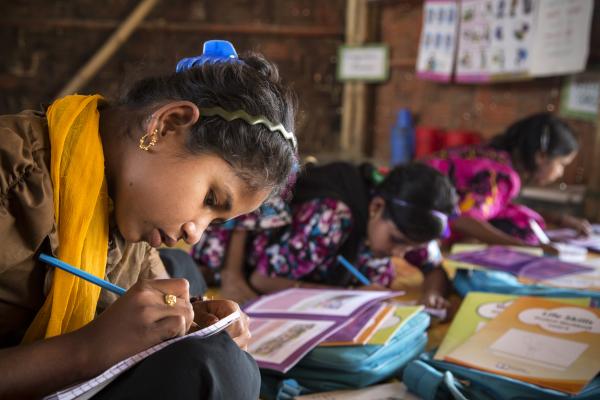
Many people share a passion for sketching at locations. For instance, Urban Sketchers are an international community of artists who sketch on location. The technique of copying a sketch from another artist is a great way to learn. A sketchbook collection can be a great learning tool!
Analyse the sketch world
Researchers will need to identify the most appropriate map for analysis in order analyse the sketch universe. This will depend on what the analysis is trying to accomplish. This could be to align the target environment with the sketch map. However, the map orientation should be objective and without any configural theta. The first step is to place landmark labels on a map. Once this is done, they will be able to rotate the sketchmap using the rotate buttons. After rotating the map, researchers should preview their configural measures to ensure that they are orienting the map correctly.
This is because sketches are not linear proportional but sub-linear in spatial space. This means that a sketch will process an input stream much faster than if it were processed by brute force. The result is that the sketch will take up less space than the input streams.

Urban Sketchers is a worldwide community of artists who sketch in situ
Urban sketching has been an art form for centuries. However, it has recently seen a revival. An online community of sketchers has been created by the popularity of digital photography. While sketchers initially shared their work only through sketchbooks, they soon discovered that digital media allowed them to show their work more easily. Gabi Campanario, a sketcher, created a Flickr group to share their work and subsequently, the Urban Sketchers community.
Today, urban sketching is a serious art form that allows artists to interact with city dynamics and document the dynamic urban environment. Many artists and sketchers sketch on-site in Odessa, to give an example. This art is unique because it combines observation and documentation of the environment.
The useful and valid way to learn is to copy the sketches of others
It is a smart idea to study the work and learn from other artists, especially if you are just starting out. Doing so not only gives you an idea of what to aim for, but also gives you an idea of how different artists express themselves. It's a great way of improving your drawing technique and understanding the beauty art.
Drawing from someone else's sketches is a good learning method in sketching. You shouldn't copy other peoples' sketches. It's a bad idea if you copy someone's sketch as your own.

Building a collection sketchbooks
Building a collection of sketchbooks is a great way to share your art with others. You can find a sketchpad or notebook for any artistic style. They also have a variety of paper options, so no matter what you're working on, you're bound to find a sketchbook you like.
Also, sketchbooks can be used to keep notes. Some sketchbooks can be used as a calendar, grocery list, or to-do list. The creator can also use sketchesbooks to create private museums.
FAQ
How much does homeschooling cost?
There are no set costs for homeschooling. Some families charge between $0-$20 per lesson. Other families offer free services.
Homeschooling takes dedication and commitment. Parents should have enough time for their children.
Access to books, materials, and other learning aids is essential. Many homeschoolers need to access community programs and events to complement their curriculum.
Parents must think about the cost of transport, tutoring, and other extracurricular activities.
Homeschoolers need to be prepared for special occasions, field trips and vacations.
How long should I prepare for college?
The amount of time spent preparing for college depends on how much you plan to devote to your studies. You should begin college preparation courses if you intend to go to college right away after high school. On the other hand, if you plan to take several years off before attending college, you probably don't need to begin planning until later.
You should discuss your plans with your parents and teachers. They might suggest specific courses. Keep track of all the courses you have taken and the grades you earned. This way, you'll know exactly what you need to accomplish next year.
What exactly is a school of trade?
People who are not able to succeed at traditional higher education institutions can earn a degree through trade schools. They offer career-focused programs designed to prepare students for specific careers. Students enrolling in these programs typically complete two years of coursework in a single semester and then enter into a paid apprenticeship program where they learn a job skill set and receive on-the-job training. Trade schools can be vocational schools, technical colleges or community colleges. Some trade schools also offer associate degrees.
How can I apply for college?
There are many ways to apply for college. You can get started by contacting your high school guidance counselor or admissions representative. Many high school applications can now be submitted online. You can also reach out to local colleges directly. Many colleges will accept applications through the Internet via their website.
If you decide to apply through the mail, you'll need to fill out the application, write a personal statement, and send copies of all required documents with your application. You have the opportunity to express why you wish to attend this college and how it will benefit you. This personal statement also helps admissions officers understand your goals and motivations.
On our website, you will find samples of essays that can be downloaded.
Statistics
- In most developed countries, a high proportion of the population (up to 50%) now enters higher education at some time in their lives. (en.wikipedia.org)
- Data from the Department of Education reveal that, among 2008 college graduates, 92.8 percent of humanities majors have voted at least once since finishing school. (bostonreview.net)
- They are more likely to graduate high school (25%) and finish college (116%). (habitatbroward.org)
- These institutions can vary according to different contexts.[83] (en.wikipedia.org)
- And, within ten years of graduation, 44.1 percent of 1993 humanities graduates had written to public officials, compared to 30.1 percent of STEM majors. (bostonreview.net)
External Links
How To
Why homeschool?
There are many factors to consider when deciding whether to send your child to school or homeschool.
-
What type of education are you looking for? Do you want academic excellence or social skill development?
-
What level of involvement do you desire to have in your child's education and learning? Are you interested in keeping up with what your child does? Do you prefer to keep informed or let your child make the decisions?
-
Are there special needs that your child has? What can you do to help your child with special needs?
-
Is it possible to manage your child’s schedule? Can you make a commitment to your child's education at home every day of the week?
-
What topics will you cover? Math, science, language arts, art, music, history, geography, etc. ?
-
How much money do you have available to educate your child?
-
Is it possible for your child to start school at an early age?
-
You will need to find somewhere to place your child. You need to locate a suitable space that is large enough for a classroom as well as adequate facilities, such as bathrooms or kitchens.
-
What is your child’s age?
-
When does your child go back to sleep?
-
When does he/she wake-up?
-
How long does it take to get from point A to point B?
-
What distance is your child from school?
-
What distance is there between your home, and the school of your child?
-
How will you transport your child to and from school?
-
What are the benefits of homeschooling?
-
What are the cons?
-
Who will watch over your child when he/she goes outside?
-
What are your expectations?
-
What type of discipline do you want?
-
What curriculum will your school use?
Homeschooling can be done for many reasons. Some of these reasons are:
-
Your child has learning difficulties that prevent him/her to attend traditional schools.
-
You would like to offer your child an alternative educational system.
-
You need more flexibility when it comes to scheduling.
-
You don't want to pay high tuition fees.
-
Your child is receiving an education of a higher quality than the one he/she could get in a traditional school.
-
You think you can teach your child better than the teacher in a traditional school setting.
-
The school system is not what you like.
-
The rules and regulations of school are confusing to you.
-
Your child should have a strong work ethic.
-
You want to give your child the freedom to choose what courses you take.
-
Your child deserves individual attention.
Some other benefits of homeschooling include:
-
There are no worries about uniforms or books, pencils, papers, or other supplies.
-
You can customize your child's education according to his/her interests.
-
Homeschooling allows parents to spend quality time with their kids.
-
Homeschooled students are more likely to learn faster than their peers, as they aren't distracted by other people.
-
Homeschoolers often score higher on standardized tests.
-
Families who homeschool tend to be happier in general.
-
Homeschool students are less likely to drop out of school.